Are you a bird lover living in New Jersey? Then you’re in luck!
The Garden State is home to a variety of finches, each with its own unique characteristics and behaviors.
From the colorful Purple Finch to the elusive Pine Siskin, New Jersey is a haven for finch enthusiasts.
In this article, we’ll take a closer look at the different types of finches that call New Jersey home and where to find them.
So, grab your binoculars, and let’s go on a finch-finding adventure!
| Image | Name |
|---|---|
 | American Goldfinch |
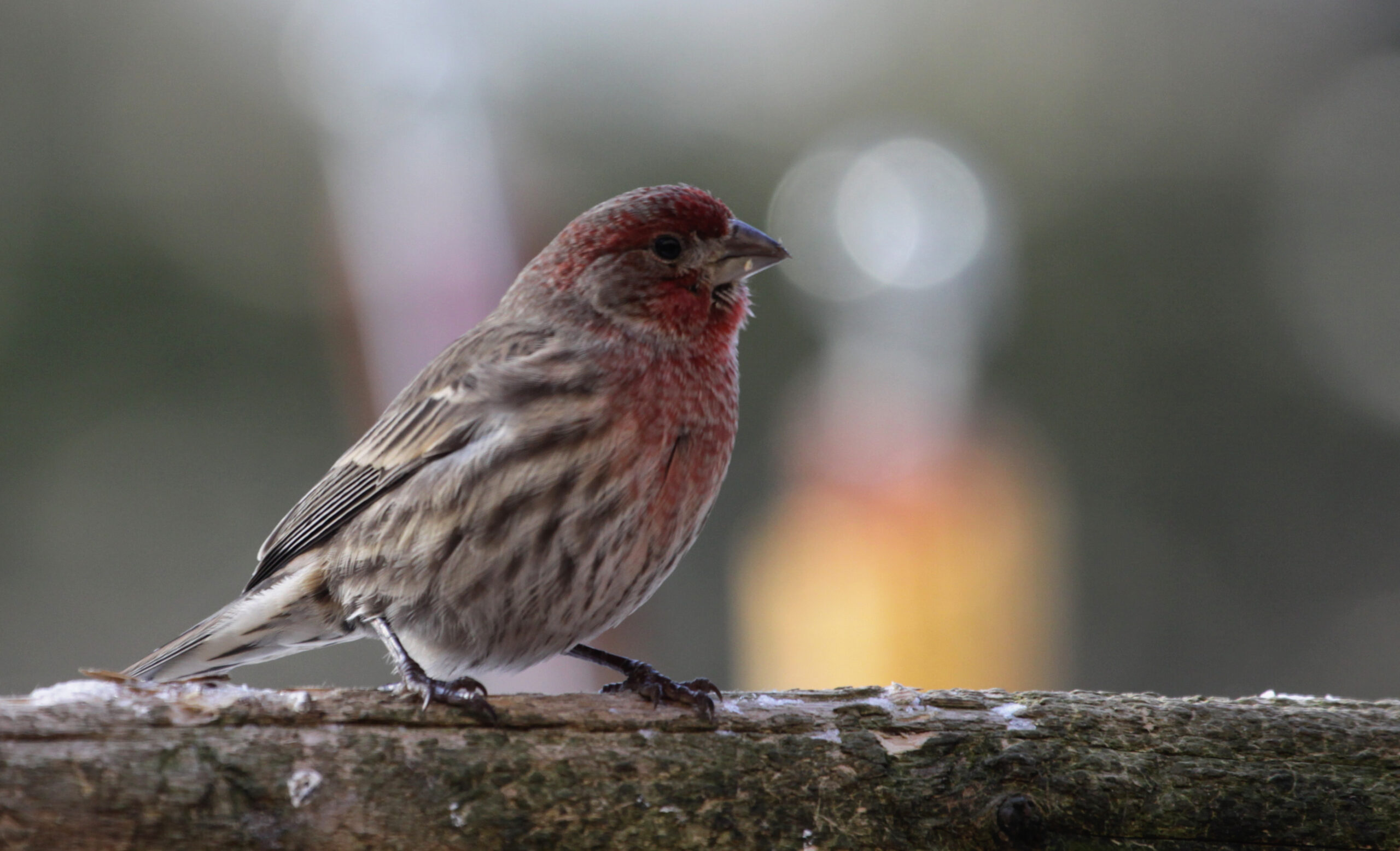 | House Finch |
 | Purple Finch |
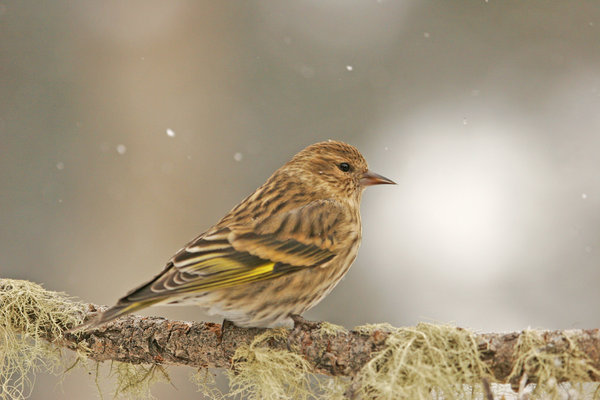 | Pine Siskin |
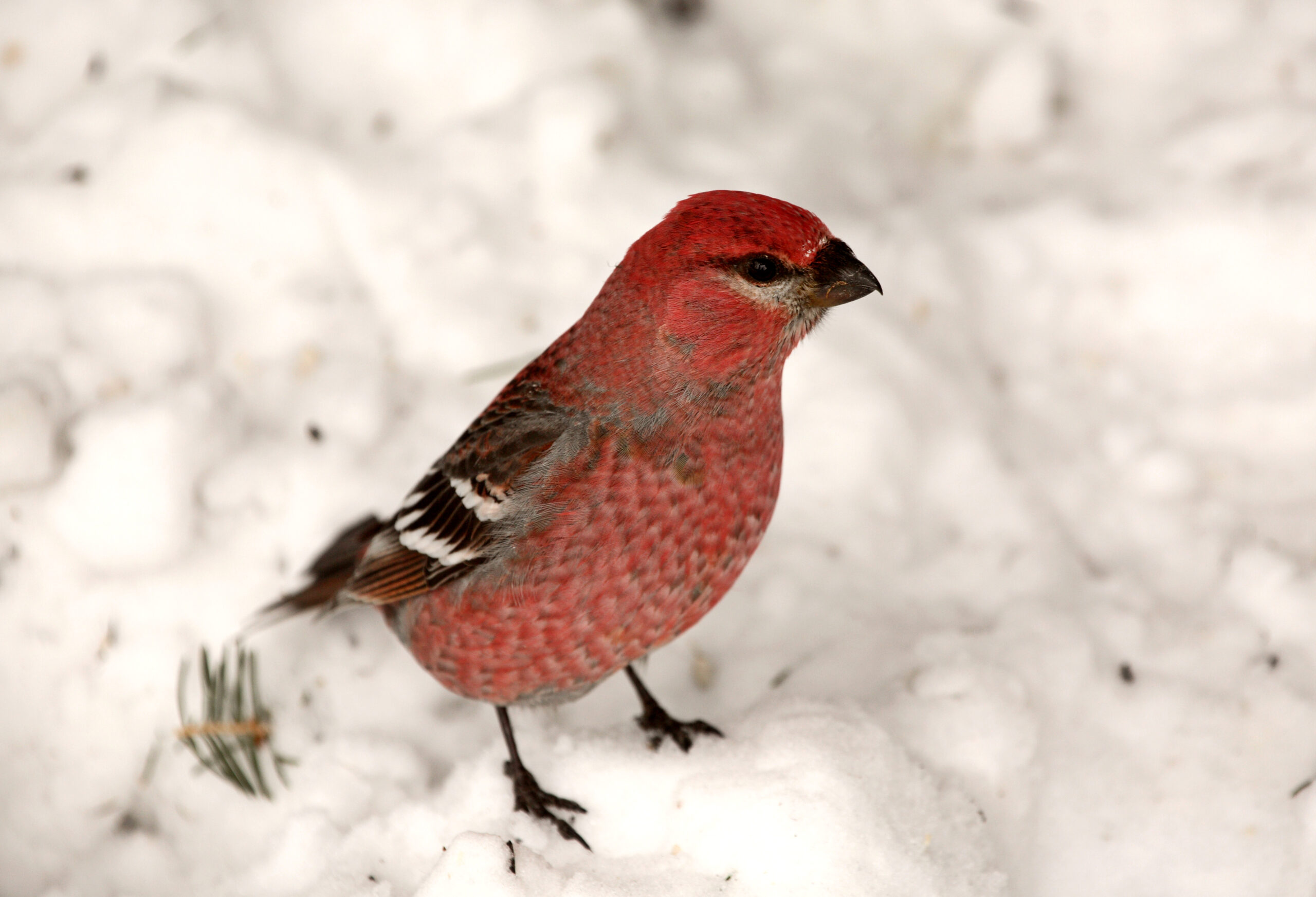 | Red Crossbill |
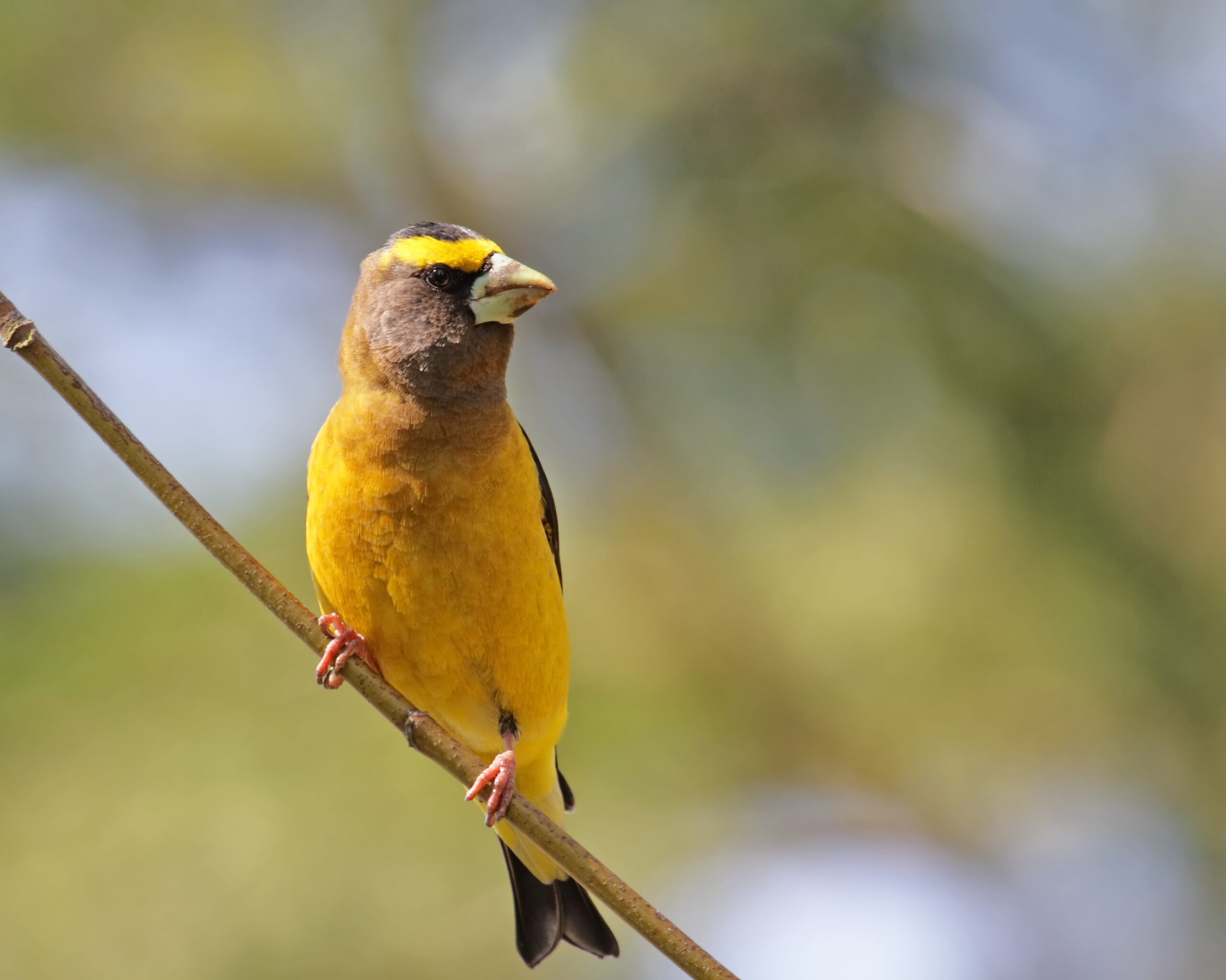 | Evening Grosbeak |
 | Common Redpoll |
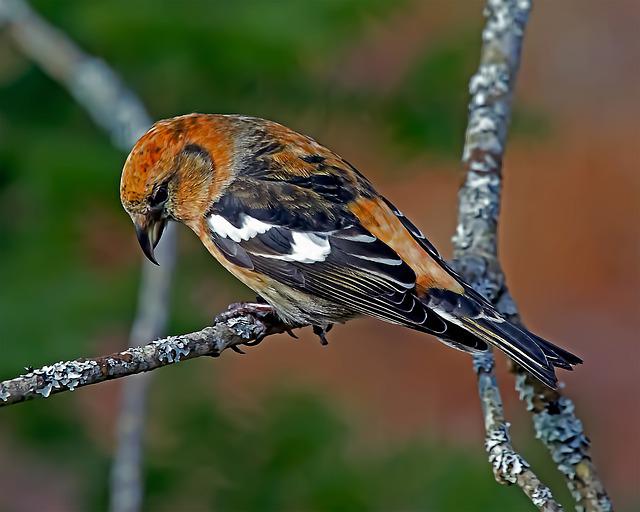 | White-winged Crossbill |
 | Hoary Redpoll |
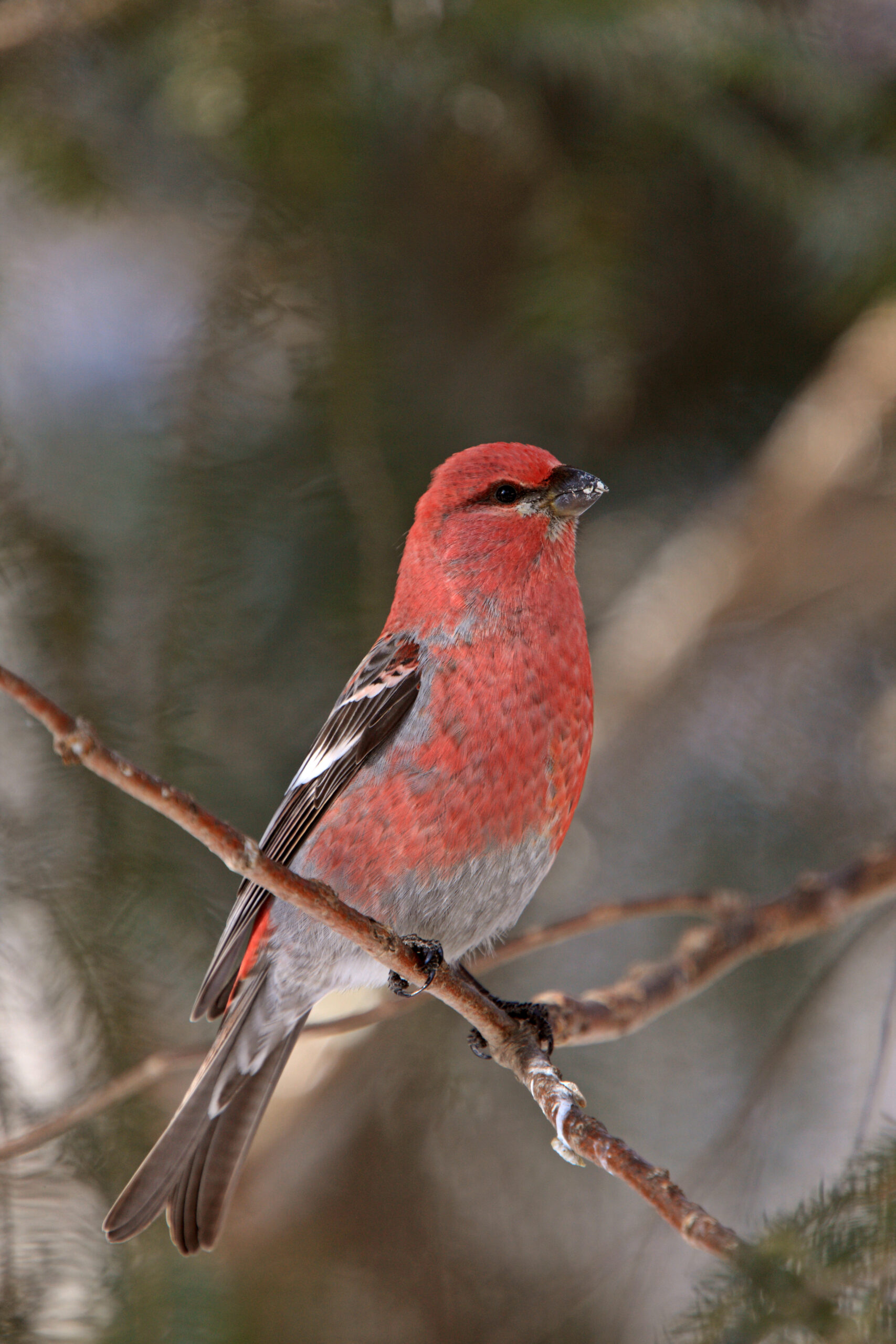 | Pine Grosbeak |
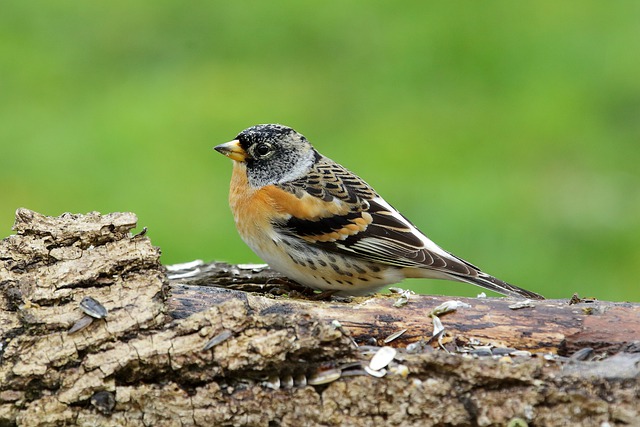 | Brambling |
Types of Finches in New Jersey
1. American Goldfinch
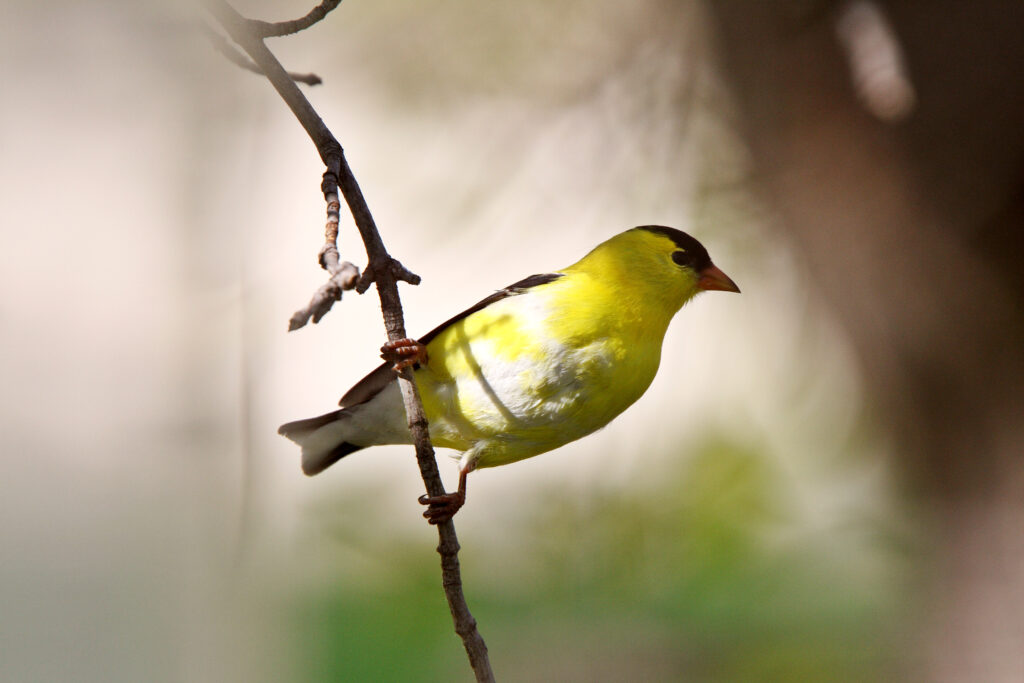
It is possible to see American Goldfinches within New Jersey throughout the year, although during the nesting season, there are much more of them.
They have been seen by bird watchers in 37% of summertime lists and in 19% of wintertime checklists that have been reported for the state.
The American Goldfinch is a well-known species of bird.
During the spring, the males have a color that is vivid black and yellow.
The ladies are a darker brown, while males in the wintertime are the same color.
The American Goldfinch is a species of finch that inhabits almost all of North America and stays put for the majority of the year.
On the other hand, during the winter months, those that spend their breeding seasons across Canada and the Midwest move to the southern states of the United States.
In weedy meadows and other overgrown regions, you could come across American Goldfinches scavenging for thistles, sunflowers, and asters among the vegetation.
They are prevalent in public parks, suburban areas, and private gardens as well.
Nesting sites for American Goldfinches are often found in young trees or dense shrubbery.
They are constructed up of strips of bark, grass, and plumage, and the female lays anywhere from three to seven eggs on top of them.
It may take anywhere from nine to thirteen days for the eggs to hatch, and during that time, the male is responsible for feeding the female while she tends to the eggs.
Planting thistles and milkweed in your garden can entice American Goldfinches to make their home there.
They will come to most bird feeders, but their favorite foods are sunflower seeds and nyjer seeds.
It is good knowledge that Brown-headed Cowbirds will lay their eggs in the nest of an American Goldfinch.
Regrettably, the seed-based food that the American Goldfinch parents provide their young is incompatible with their nutritional needs, and as a result, the young do not survive.
2. House Finch
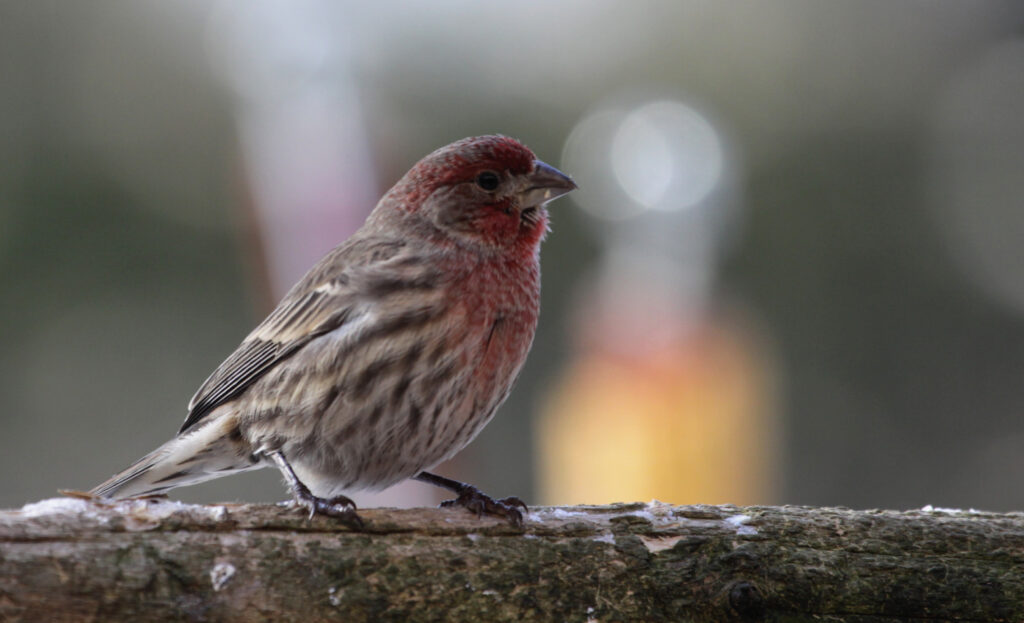
House Finches are year-round inhabitants of the state of New Jersey.
Although they do rarely migrate, bird watchers in the state have found evidence of them on around 24 percent of their summer and winter checklists.
Male House Finches are distinguished by their crimson breasts and heads, while the remainder of their bodies is mostly marked with brown streaks.
The females have brown spots all over their bodies.
House Finches were exclusively found in the western regions of the United States at one point, but they were later imported to the eastern states, where they have thrived so much that they have driven out the Purple Finch.
House Finches like to congregate in loud flocks that are difficult to miss and may be seen in areas such as woodland borders, garden feeders, parkland, and fields.
They eat things like seeds and fruit as well as buds.
Nests of House Finches are often discovered in dense vegetation, shrubs, natural empty spaces, and sometimes even in man-made structures.
The female constructs them from grass, feathers, twigs, and leaves, among other things.
There may be anywhere from three to six eggs present at any one moment, and the hatching process may take up to two weeks.
Put nyjer seeds, milo millet, or black oil sunflower seeds, and nyjer or milo seeds in tube feeders or platform feeders in your garden to entice house finches.
Caged House Finches were first introduced to the Long Island population. After being released back into the wild, they quickly became successful and expanded all the way to the eastern United States.
3. Purple Finch
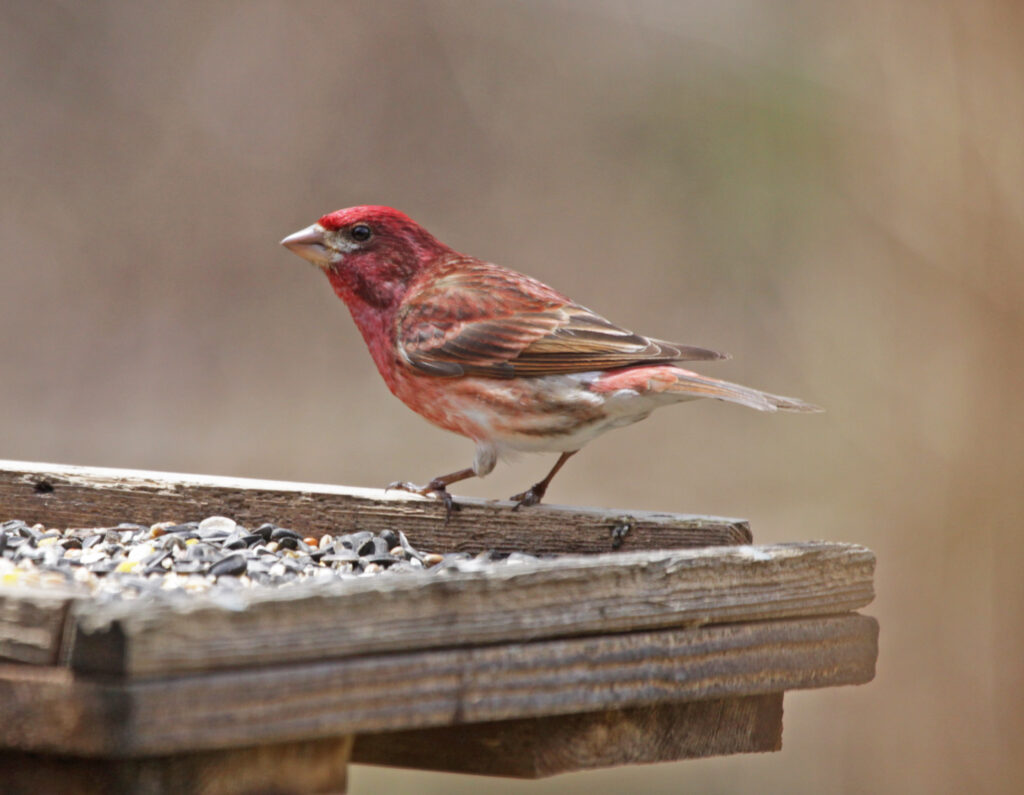
The months of September through the middle of May are the most common times to see Purple Finches across New Jersey since they are winter birds.
Two percent of winter checklists include them in their tally.
Male Purple Finches possess chests and heads that are more of a reddish-purple color, while their wings and backs are browner, and their bellies are lighter in color.
The females have brown spots all over their bodies.
They have a fairly similar appearance to the House Finch, but their backs, particularly the tops of their heads, are much redder.
Although they breed in Canada and spend the winter in the eastern states, Purple Finches may be seen in the northeast and along the Pacific coast throughout the whole year.
The Purple Finch is a woodland bird that lives in evergreen woods and feeds mostly on seeds but sometimes consumes buds, nectar, and berries.
Nesting territories of Purple Finches are often found in the canopy of trees.
They are constructed of weeds, twigs, and bark in addition to moss.
They typically carry anything from three to four eggs, which the female incubates for a period of fourteen days.
Black oil sunflower seeds are an excellent way to bring Purple Finches to your gardens and backyards.
The Purple Finch is the official bird of the state of New Hampshire.
4. Pine Siskin

Pine Siskins are most often seen in New Jersey during the wintertime, which runs from October until May, and are only seen on 1% of winter lists overall.
Pine Siskins are little brown finches that have yellow streaks in both their wings and their tails.
They possess a small pointy beak, pointed wings, and a tail that is forked in the middle.
Pine Siskins spend their whole lives in the coniferous woods of the western United States and near the Canadian border.
Breeding occurs for some of them in Canada before they go south for the winter.
They may be found throughout a large portion of North America; however, their distribution is highly dependent on the pine cone crop.
Pine Siskins mostly consume seeds from conifers, as their name may imply, but they will also consume young buds and seeds from grasslands and weeds if given the opportunity.
Nests of Pine Siskins are constructed ten to fifty feet above the ground, distant from the tree trunk, and anywhere from ten to twenty-five feet in width.
The nests are often constructed from bark, moss, and twigs, and they may hold anywhere from three to seven eggs.
The eggs will not hatch for around fourteen days after being laid.
Thistle and nyjer feeders, as well as those with suet and black oil sunflower seeds, are great ways to get Pine Siskins to visit your backyards.
The chirping of the Pine Siskin is where the word “siskin” originated.
Therefore, we may refer to it as a “pine chirper”.
5. Red Crossbill

Although they are not particularly frequent in New Jersey, Red Crossbills may be seen here on a fairly consistent basis throughout the winter.
Male Red Crossbills have a deeper shade of red overall, and their tails and wings are also darker.
The coloration of females is yellow and brown. Their mouthparts have an oddly twisted morphology that forms a cross when they are closed.
They have notches cut onto their tails. The juveniles have a browner appearance.
In the eastern states, red crossbills spend the winter only if there are insufficient cone plants in the western and northern states where they dwell year-round.
The Red Crossbill is most often seen in coniferous woods, although it may sometimes be seen foraging for food along the sides of highways in the morning.
They subsist on the seeds of conifers and move in large flocks from tree to tree in search of food, even using their strong beaks to crack open closed cones.
Near the very top of a pine tree is where you’ll find the Red Crossbills’ nests.
They are similar to shallow saucers and are formed of roots, bark, and grass, with moss and plants lining the inside.
The female lays anywhere from three to five eggs, and it might take up to eighteen days for the eggs to hatch.
Suet, Apple Slices, Peanut Kernels, Safflower, Millet, and other fruits, may all be used to entice Red Crossbills to visit your gardens.
Red Crossbills have a variety of beak shapes and sizes, and their flight cries are distinct from one another.
Birds that have the same kind of crossbill tend to congregate together and are able to understand each other’s flight calls.
6. Evening Grosbeak

Evening Grosbeaks are a species within New Jersey that is considered to be endangered, yet, it is possible to see them when they are migrating through the state, particularly in the month of November.
Evening Grosbeaks are large, stocky birds with disproportionately large bills and a distinctive combination of yellow and black.
The adult males possess a brilliant yellow stripe that runs across their eyes, giving them a menacing appearance.
Their heads are dark, while their chests and necks are grey, and their bellies and chests are yellow.
In addition, each of their wings has a white spot on it.
Females and immature males possess bills that are a bluish-green color, bodies that are predominantly grey, wings that are black and white, and a yellowish tint to the neck.
Evening Grosbeaks are found year-round throughout the southern portion of Canada and all the way across the west coast towards northern California.
However, when there aren’t enough cones to go around, they go south to the majority of the states in the United States.
Forests and mountainous terrain are the best places to look for Evening Grosbeaks.
In the winter, they are often drawn to the bird feeders that are placed in gardens, and the primary reason for this is that the feeders provide easy access to a source of food.
Evening Grosbeaks have a natural diet that consists of flower buds in the spring, insect larvae from treetops in the summertime, and seeds, berries, and tiny fruit in the winter.
During the summer season, they congregate at garden feeders to consume bug larvae.
The nests of Evening Grosbeaks are often located in pine trees at heights of up to 100 feet above the ground.
The nests are haphazardly constructed and comprised of rootlets, pine needles, twigs, grass, and moss, among other materials.
Typically, the female will lay anything from one to five eggs, which she will then tend to for the next 14 days until they are ready to hatch.
Sunflower seeds, berries, and maple buds are three foods that can entice Evening Grosbeaks to spend the winter in your garden.
Evening Grosbeaks have such strong bills that they are able to break seeds that are difficult to crack for other smaller birds.
Because of this, these birds stick around to consume whatever is left over after the other birds have finished eating.
7. Common Redpoll

The Common Redpoll is a bird that is seldom seen in New Jersey, although during the winter months of November through April, it is possible to observe one.
Small birds with red foreheads and white and brown spotting on the rest of their bodies, Common Redpolls have brown and white streaking on the rest of their bodies.
Pink breasts are not exclusive to females; guys may also have them.
They have short tails with notches and rather tiny bills for finches.
Common Redpolls make their homes in the remainder of Canada and the northern states of the United States during the winter and may sometimes be seen in the middle states of the United States.
They may sometimes dig burrows into the snow during the winter months in order to maintain their body temperature as they sleep.
They are able to consume up to 42 percent of their body mass on a daily basis and have the capacity to store approximately two grams of seeds in a stretchable park located in their esophagus.
Common Redpolls may be found eating catkins on trees or in weedy areas, but they also visit bird feeders looking for tiny seeds like nyjer or thistle seeds.
Common Redpolls build their nests in the cracks and crannies of rocks or in thick, low shrubbery.
Moss, plant material, feathers, and animal hair are often used in the construction of nests since this helps to maintain both the nest and the eggs at a comfortable temperature.
The female lays anything from five to seven eggs, which she incubates for around eleven days after they have been laid.
Even after they have emerged from their eggs, the young birds continue to spend their first two weeks of life in the nest with their moms, where they continue to receive nourishment and care.
Feeding Common Redpolls sunflower seeds and nyjer seeds that have been shelled can encourage them to visit your garden.
The Common Redpoll is able to withstand temperatures as low as -65 degrees Fahrenheit without succumbing to hypothermia.
To maintain their warmth, they add around thirty percent more feathers.
8. White-winged Crossbill

There have been reports of White-winged Crossbills visiting New Jersey throughout the winter, despite the fact that they are not particularly frequent in the state.
Finches with hefty beaks that are crossed in appearance are known as White-winged Crossbills.
Males are easily identifiable by their bright red plumage, black wings and tails, and two white wing bars.
The females are distinguished by their yellow and brown coloring, as well as two white wing bands.
White-winged Crossbills may be found in the woods of Alaska, Canada, and occasionally the northern states of the United States, although their primary habitat is Alaska and Canada.
In spruce woods, you could spot White-winged crossbills foraging for food among the seeds.
White-winged Crossbills build their nests in the crooks and crevices of horizontal tree limbs.
They are constructed from twigs, bark, grass, moss, and lichens, among other natural materials.
There might be as many as 5 eggs in a nest, and the female will incubate them for a total of two weeks until the young emerge from their shells.
These birds have the unusual ability to reproduce at any time of the year, provided there is sufficient food.
They frequently travel in big flocks, which may sometimes be heard.
9. Hoary Redpoll

The Hoary Redpoll is referred to as an accidental species within New Jersey, and the last time one of these birds was seen in the state was in the year 2021.
Hoary Redpolls are tough little birds despite their small size.
Adults are easily identifiable by their white coloring and a distinctive red spot in the center of their foreheads.
Adult males possess a chest that is reddish in color; however, adult females do not have this trait.
When compared to men, females possess a greater number of stripes on their bellies.
Juveniles have a completely different appearance than adults; they do not have a red spot on their forehead, and their bodies are largely grey with a lot of striping on them.
Hoary Redpolls migrate just short distances southward during the winter months since they reproduce in the Arctic.
During the summertime, Hoary Redpolls are most likely to be seen in open subarctic evergreen woods as well as protected tundra birch forests.
They go into the brush, open woods, and weedy meadows during the winter months, making their way closer to cities and villages.
They also consume the seeds of birch and alder trees, as well as other insects.
Nests of the Hoary Redpoll may be tucked away in the cavities of trees, the cracks and holes of rocky regions, and thick shrubbery.
The nest is constructed of grass, small branches, and pieces of root, and it is lined using soft grass plumage and animal fur for padding.
They typically lay between five and ten eggs, each of which takes around ten days to hatch.
The baby birds will fly out from the nest in around two weeks.
It is possible for the Hoary Redpoll to pluck off part of its body plumage if the temperature in its surroundings gets very warm.
Don’t be concerned; they will regrow.
10. Pine Grosbeak
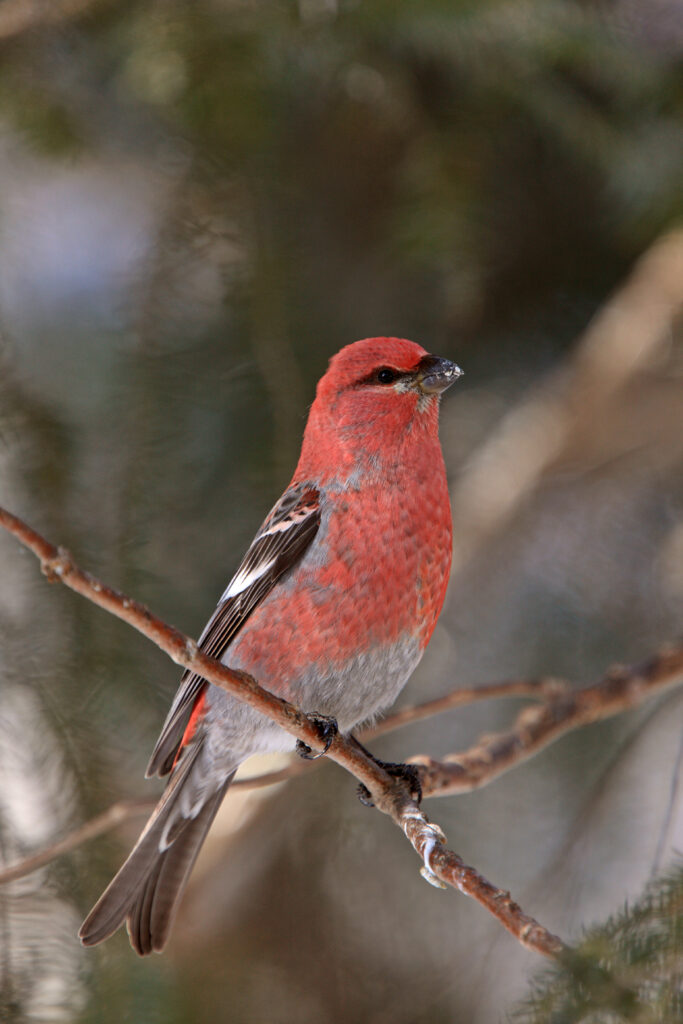
Pine Grosbeaks are not frequently observed in the state of New Jersey, although winter is the only time of year when they have been documented here.
Male Pine Grosbeaks are red birds with grey on the tail and wings and they have two white wing bars in addition to their red coloring.
The heads and rumps of females have a dull orange color, and they have grey bodies.
They are big for finches and move rather slowly for their size.
Pine Grosbeaks are most common in Canada, although they may also be seen in the Sierra Nevada in California, the mountainous western United States, and along the border between Canada and the United States.
Pine Grosbeaks are found in spruce, pine, and fir woods, where they subsist on the seeds, fruit, and buds produced by these tree species.
During the summer, they will also consume a variety of insects.
The average height at which Pine Grosbeaks build their nests is between 10 and 12 feet over the ground and in low trees.
The nests may house anywhere from two to five eggs and are constructed of twigs, bark, weeds, moss, and lichen.
These eggs are carried about by the female for around 14 days as she incubates them.
Black oil sunflower seed feeders and suet feeders are two of the best ways to get Pine Grosbeaks into your back gardens.
The name “Pine Grosbeak” fits these birds well. “Pine dweller” is the literal translation of their scientific name, “Pinicola.”
11. Brambling

Throughout New Jersey, bramblings are considered an accidental species since they have not been seen in the state for many years.
The heads of bramblings are black, while their necks and breast are orange.
Bramblings are small birds.
Their wings are mostly black, with occasional white and orange bands here and there. Their stomachs are white in color.
Females are easier to confuse with youngsters since their colors are very identical, with the exception that their heads are orange.
Bramblings are most often found in northern regions of Europe, Africa, and Asia, but during migration, they may sometimes be seen in Canada, Alaska, and the northern states of the United States.
It is possible to come across Bramblings in areas with birch trees and willows, as well as in parkland, agricultural fields, and even private gardens.
During the summer, their diet consists of insects, while in the winter, they consume seeds.
Nests of Bramblings are typically found high up in trees, tucked safely away in the forks of tree branches.
The nest is constructed by the females using materials like birch bark, grass, and moss.
The nest is subsequently strengthened using spider webs, wool, and down plumage.
It may take approximately ten eggs about two weeks to hatch, and there might be as many as seven eggs at a time.
Only in the areas where they typically spend the winter can bramblings gather in flocks that exceed the tens of thousands and possibly even the millions.
Check out this article on Types of Finches in Missouri.
Conclusion
New Jersey’s diversified landscape and climate make it an ideal home for a plethora of bird species throughout the year.
Most of your favorite birds will be more visible in the spring and early summer, but others will remain all year long.
So, the next time you’re out and about in the parkland, the marshes, or the neighborhood, keep your eyes peeled for a bird that could be attempting to get your interest.
FAQ
What types of finches can be found in New Jersey?
New Jersey is home to several species of finches, including the American Goldfinch, House Finch, Purple Finch, Pine Siskin, and Common Redpoll.
Where can I find finches in New Jersey?
Finches can be found in a variety of habitats in New Jersey, including woodlands, gardens, and suburban areas. They are also commonly seen at bird feeders.
What is the best time of year to see finches in New Jersey?
The best time to see finches in New Jersey is during the spring and fall migration seasons. However, many finch species, such as the American Goldfinch, are year-round residents in the state.
How can I attract finches to my backyard?
Finches are attracted to bird feeders filled with sunflower seeds, thistle seed, and nyjer seed. They also enjoy nesting in birdhouses and shrubs with berries.
Are finches in New Jersey threatened or endangered?
Most of the finch species found in New Jersey are not considered to be threatened or endangered. However, populations of some species, such as the Purple Finch, have seen declines in recent years due to habitat loss and competition for food sources.
Last Updated on June 29, 2023 by Lily Aldrin
